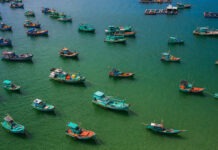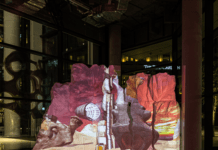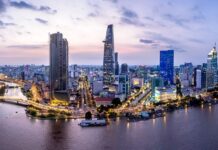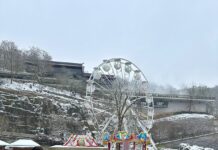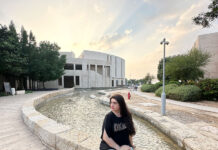Albania’s stunning mountain scenery, crumbling castles, boisterous capital and dreamy beaches enchant visitors from all over the world. Discover Tirana, a buzzing city with a mishmash of garishly painted buildings, traditional restaurants and trendy bars. Head to the mountainous hinterlands, particularly sleepy hillside towns of Berat and Gjirokastra – both essentially open-air museums of life in Ottoman times. Keen hikers will want to explore the valley of Valbona, where karst limestone mountains harbor astonishing biodiversity, and as the snowcapped peaks of the interior drop down to the ocean, the immaculate beaches along the Ionian coastline are among the Mediterranean’s least developed sands. There are quite a few amazing sights across Albania.

Gjirokastra: Gjirokastra is also known as the ‘The Stone City’, and its most important structure is the castle, which is the biggest castle in Albania. Inside the castle, you can visit the Museum of Weapons, opened in 1971. Weapons from the prehistoric times up to the World War II are exhibited on here. The National Folk Festival has taken place in this castle during the years. During your stay in Gjirokastra, you can visit the Ethnographic Museum, located in the house where the former communist dictator Enver Hoxha was born. Other important traditional buildings to visit are Angonati House , Babaramo newly restored house , Skendulaj house , Eqrem Cabej House under restoration , Kikino House and many others but also the statue of the main square dedicated to the patriot Cerciz Topulli and other important religious monuments of Bektashi sect and Orthodox religion . The town of Gjirokastra is also known for its culinary art including special dishes like pasha qofte, shapkat, oshaf with dried figs (a dessert with sheep`s milk, sugar and dried figs), etc. In Gjirokastra you can visit interesting sites, part of the cultural heritage as well as natural wonders.

Antigonea: The archaeological park of Antigone is located near Saraqinishte village in the region of Lunxhëria, east of Gjirokastra. It is 14km away from Gjirokastra. The archeological park has a surface of 92 hectares.
Antigone was founded by King Pyrrhus of Epirus in 295 B.C., who named the town after his first wife, Antigone. At the end of 3rd century and the beginning of 2nd century BC, it grew into an important economic, cultural and political center and took the form of a state (polis). It was surrounded by walls, 4,000 meters long. There are many attractions to be visited in the archaeological park Antigone such as: the mosaic, columns, promenade, an antique scale, the surrounding walls, etc. In the village of Labove e Kryqit, located near the small town of Libohova, you can visit one of the oldest and the most beautiful Byzantine churches in Albania, dedicated to St. Mary. It is built in a style similar to that of Hagia Sophia in Istanbul. It was thought that the church used to have a relic, which is missing now. It was part of the cross where Christ was crucified.

Durrës: The most notable tourist attraction in Durrës is the amphitheater of the Roman Emperor Hadrian with 15,000 seats, the second biggest amphitheater in the Balkans. During the 9th century, a small church with mosaic-covered walls was built nearby. You can also see the bathhouses of the 2nd century A.D. and the nearby Byzantine forum of the 5th-6th century with marble columns. One third of the original wall of the city castle is still standing, and you can even walk along the same road that Caesar himself once strolled. The Archeological Museum is located in a new building on Taulantia road , one of the most important of its kind and of great interest to visitors. The most renowned archaeological structure found in Durrës is ‘Bukuroshja e Durrësit’, a mosaic from the 4th century BC. Today, it is exhibited in the National Historic Museum in Tirana. The Ethnographic Museum is the house of the historic famous actor Alexander Moissi born near Durres.

Tirana: With its clubs, bars, cafes, and taverns, Tirana is worth discovering by both day and night. Visit the museums and the key spots such as Sheshi Skënderbej. The monumental Tomb of Kapllan Pasha and the Ura e Tabakëve (a bridge constructed in the beginning of the 19th century, located on Bulevardi Zhan D’Ark) are also worth visiting. As a capital, Tirana has the country’s finest museums, theatres, and galleries representing the national arts.

Pogradec: The region of Pogradec is rich in striking and distinctive natural and historical monuments. You might visit the natural monument, the Rock of Kamje, which is located in the commune of Dardhas. It is 70 m high and suddenly rises out of the surrounding terrain like a ‘ship sailing in a sea of green’. The Church of Marena , the archaeological site and Monumental Graves of Selca lie 30 km away from Pogradec. The most visited tourist spots around Lake Ohrid are Lin, Pojskë, Hudenisht and Tushemisht. Worth visiting are the Drilon water sources, located 5 km from Pogradec. Don’t forget about the wonderful restaurants in the area, constructed from wood and offering some of the most delicious dishes of the region such as the Koran fish specialty (Tavë Korani).


